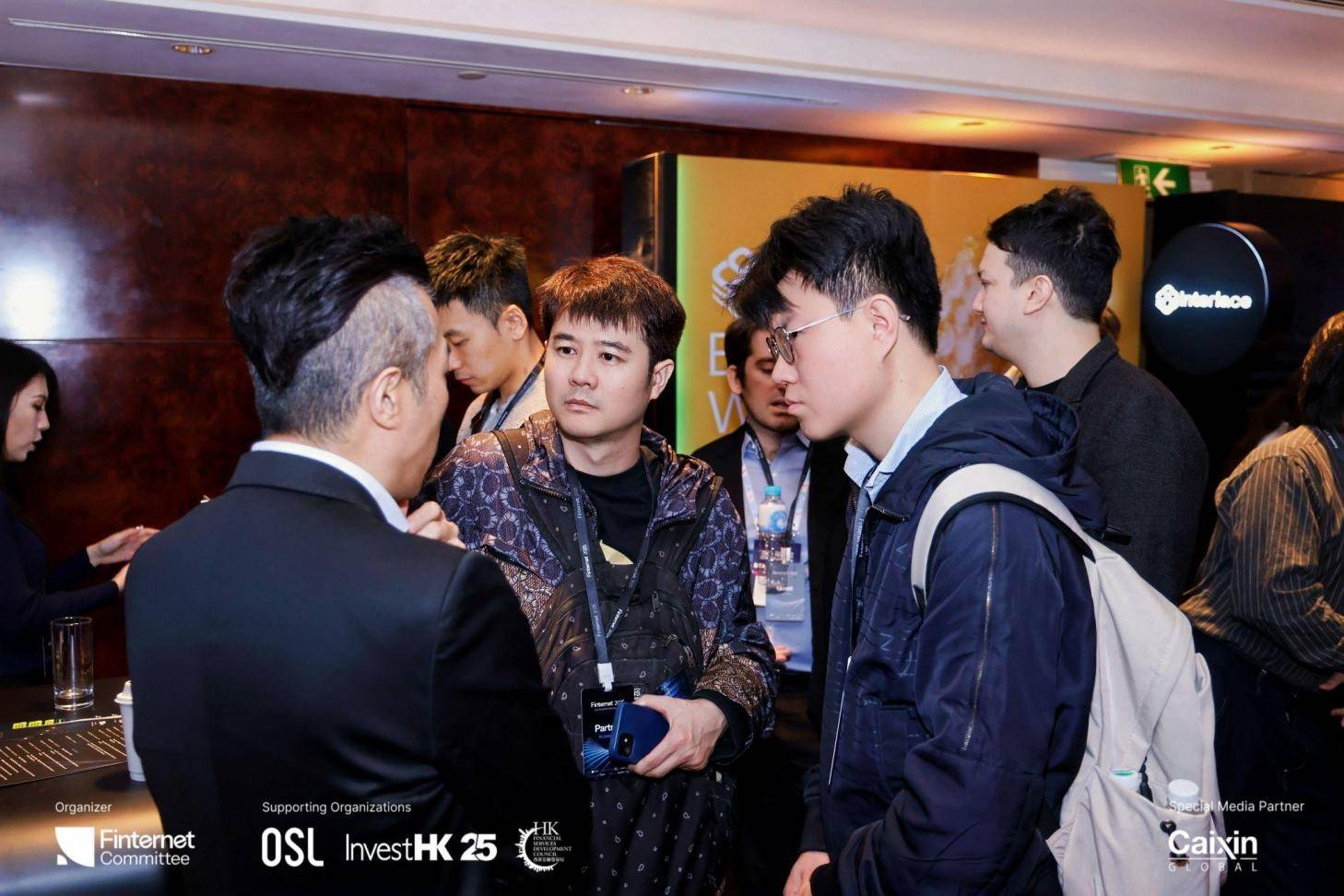As an important window for Hong Kong to become a global fintech hub, FinTech Week has become a core platform for dialogue among policymakers, businesses, and innovators.
From November 3 to 7, the Hong Kong FinTech Week 2025 will be grandly held in Hong Kong. As one of the most influential fintech events in Asia, this conference covers cutting-edge fields such as artificial intelligence and blockchain, and sets up multiple thematic forums on digital assets and Web3, exploring how emerging technologies are reshaping the global financial system and capital flows. As an important window for Hong Kong to become a global fintech hub, FinTech Week has become a core platform for dialogue among policymakers, businesses, and innovators.
The globally leading card issuance and fund management platform Interlace has been invited to attend the Finternet Committee 2025 hosted by organizations such as Invest HK, FSDC, and OSL Group. Interlace COO Henry Chan shared the stage with guests from companies like Tether, Morph, Banxa, and Aptos to discuss the future blueprint of stablecoins, commerce, and payment experiences.

Capital Agility: A New Benchmark for Business Competitiveness
Currently, under the influence of geopolitical factors and macro policies, market volatility has become the norm, and the ability of businesses to manage funds is facing unprecedented challenges—efficiency and resilience in cross-border, multi-chain, and multi-market flows are becoming key capabilities for businesses to maintain continuous operations—namely, capital agility.
In a roundtable discussion themed "The Digital Bridge: Stablecoins, Commerce, and the Future of Payment Experience," Interlace COO Henry Chan shared his insights on the evolution of stablecoins from the perspective of a company dedicated to bridging Web2 and Web3 financial innovations—stablecoins are becoming a "digital new link" connecting the digital economy and physical commerce, with their application potential expanding from the crypto-native field to real-world scenarios such as cross-border e-commerce, B2B settlements, advertising placements, and payroll. Based on this, the narrative of stablecoins has shifted from "decentralized revolution" to "enhancing real financial efficiency," meaning the value of stablecoins lies in enhancing the capital agility of businesses, allowing funds to flow flexibly across different chains, currencies, and settlement networks.
"The attributes of stablecoins, such as value anchoring, programmability, real-time settlement, and on-chain traceability, enable businesses to flow freely between multiple currencies and chains while maintaining compliance and transparency," Henry stated, adding that the popularity of stablecoins is not only due to the gradual clarification of policies but also stems from the real demand of businesses for "instant settlement and global interoperability."
The Evolution of Stablecoins: From Payment Tools to Infrastructure
In the past, the biggest challenge for businesses or institutions adopting stablecoins was not the technology, but the fragmentation of the system: funds were often scattered across different chains and wallets, lacking connections with fiat accounts and clearing networks. This means that even if businesses wanted to use stablecoins to enhance settlement efficiency, it was difficult to strike a balance between compliance, security, and liquidity. "Businesses do not lack innovative solutions; what they lack is a set of underlying systems that can connect traditional finance with on-chain funds," Henry shared from his observations among clients.
Moreover, traditional payment giants like MasterCard, PayPal, and Western Union are also testing the waters with stablecoins, indicating that the competition in the global payment network is shifting from a single channel to network-level integration.
As a global card issuance and fund management platform, Interlace adheres to an open, convenient, and innovative product system—from card issuance to risk control, from BIN management to multi-currency settlement, businesses and developers can quickly integrate payment, card issuance, and crypto account functions as if calling upon a basic network. With this architecture, Interlace is driving stablecoins toward mainstream infrastructure, helping businesses achieve true agility in global capital flows.
Additionally, Interlace is committed to enabling businesses to manage cross-system and cross-currency capital flows on a unified platform, including providing global accounts, MPC wallets, fiat and cryptocurrency exchanges, card issuance, CaaS API, and embedded KYT/KYC/KYB risk control systems, helping businesses safely, automatically, and compliantly manage funds amidst the fluctuations of multiple chains, currencies, and markets.
From Dialogue to Practice: Observations from FinTech Week
In addition to sharing, Interlace also set up a booth at the summit to showcase the latest card issuance, fund management, and API solutions. This offline interaction extended the concept of "capital agility" from forum dialogue to practical exchange, allowing more industry participants to intuitively understand how Interlace reconnects the complex global payment network through technology and compliance infrastructure.

From the discussions at Finternet 2025, it can be seen that the global financial system is entering a phase of "reconnection." Stablecoins are no longer a conceptual product of the crypto industry but are becoming a key hub for integrating traditional and new financial systems.
Interlace is turning this "connectivity" into reality with practical infrastructure—whether it is enterprise accounts, payment settlements, or card networks, they are redefining the way cross-border capital flows with higher transparency and speed.
As of now, Interlace has issued over 6 million cards; served more than 12,000 enterprise clients, covering Web3 companies, cross-border e-commerce, B2B trade, and fintech platforms; its business spans over 180 countries and regions; it holds multiple financial licenses in the United States, Hong Kong, and Lithuania, and has obtained the highest level of PCI-DSS Level 1 security certification.
免责声明:本文章仅代表作者个人观点,不代表本平台的立场和观点。本文章仅供信息分享,不构成对任何人的任何投资建议。用户与作者之间的任何争议,与本平台无关。如网页中刊载的文章或图片涉及侵权,请提供相关的权利证明和身份证明发送邮件到support@aicoin.com,本平台相关工作人员将会进行核查。




